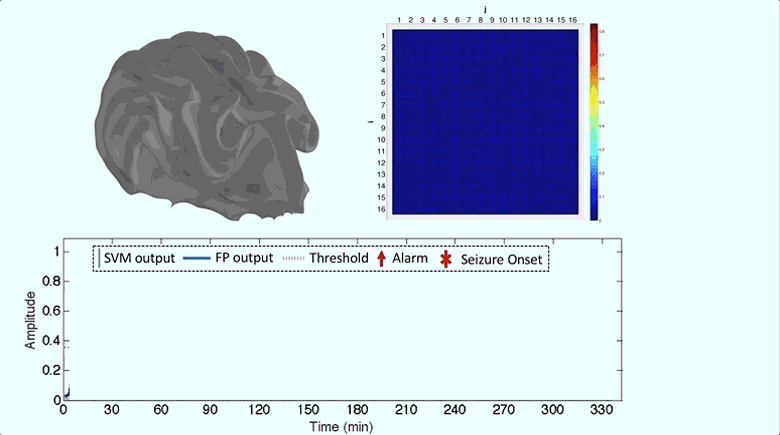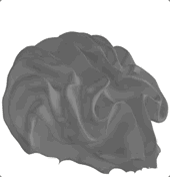
Epilepsy is a chronic condition characterized by recurrent, spontaneous, and unpredictable seizures resulting from the abnormal and excessive synchronization of groups of neurons. While first line of treatment consists of anti-epileptic medication, about a third of patients are refractory. Epilepsy surgery is recommended after medication failure and when seizures are confined to one area of the brain where tissue can be safely removed. Unfortunately, complete seizure control remains elusive. Accurate seizure forecasting is nowadays a major concern in the epilepsy research community. Paucity of intracranial electroencephalographic (iEEG) recordings, limited amounts of ictal events and short duration of interictal periods are major obstacles to adequate assessment of seizure forecasting. Recently, long-term continuous bilateral iEEG recordings were acquired from dogs with naturally-occurring epilepsy using the implantable NeuroVista ambulatory monitoring device allowing an adequate quasi-prospective evaluation of seizure forecasting. However, one of the major caveats of using these long-term canine iEEG recordings in seizure-prediction investigations was non-a priori knowledge of the seizure onset zone.
In this manuscript, we propose Kmeans-directed transfer function, an adaptive effective connectivity method intended for the seizure onset zone localization in bilateral iEEG recordings. Electrodes identified as seizure activity sources and sinks are then used to implement a seizure-forecasting algorithm on long-term continuous recordings in dogs with naturally-occurring epilepsy. Seizure generators were focal in all dogs confirming the diagnosis of focal epilepsy while sinks spanned both hemispheres in 2 of 3 dogs suggesting an interhemispheric communication during seizure initiation. A precision-recall genetic algorithm is proposed for feature selection in line with a probabilistic support vector machine classifier. Results show performance improvement compared to previous studies, achieving average sensitivity of 84.82% and time in warning of 0.1.

